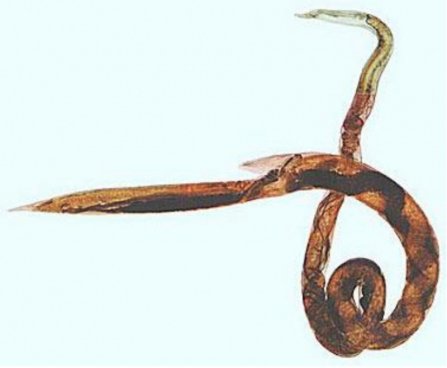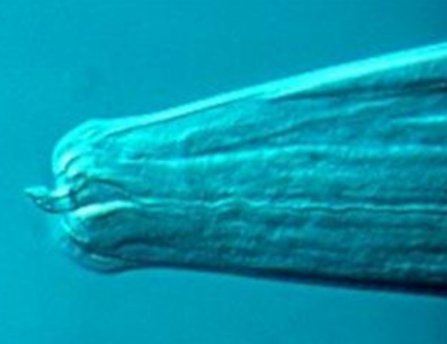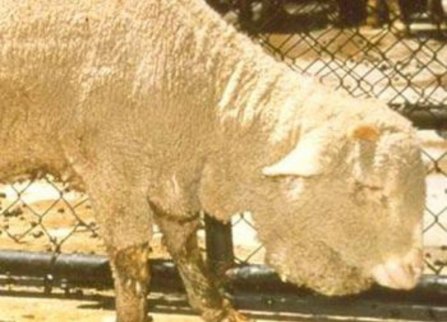Barber’s pole worm is most commonly found in Queensland and the northern half of NSW where summer rainfall is common or dominant. This worm is less of a problem in the winter rainfall areas of Australia, but localised pockets exist in all states and infections are worse in summers that are wetter than usual. It is a blood sucking parasite and can be fatal for all classes of sheep and goats.
The adult female worms are quite long (20 to 30 mm) and clearly visible. They have the characteristic ‘barber’s pole’ appearance due to the pink (blood-filled) intestinal tract of the worm twisted around the paler reproductive tract; whereas the males are smaller (around 15 mm) and pale pink. Females are prolific egg layers, laying up to 10,000 eggs per day, and as such, much higher worm egg counts are usually seen with these worms than with the scour worms. This also means that the level of worm egg count at which drenching should occur is higher.
Adults can become arrested or inhibited inside the sheep or goat for varying periods. They resume activity when external environmental conditions become more favourable, for example, at the onset of spring, or when ewes and does have lowered resistance to worms, which happens around lambing and kidding and until 8 weeks after parturition. Even moderate infections of barber’s pole can have a marked effect on milk production of ewes and does leading to a retardation of growth in their lambs and kids.
Further ecological information on worms and their control:


4th stomach or abomasum.
Death, anaemia, lethargy and collapse, failure to gain weight and bottle-jaw (sub-mandibular oedema). A break in the wool may also occur in acute outbreaks when stock become critically anaemic. In chronic disease, decreased food intake, weight loss and anaemia are commonly observed.

The only accurate way to diagnose worm infections before productivity losses have occurred is to regularly conduct a WormTest (worm egg count). A larval culture is usually also recommended in areas where barber's pole worms are common and in other areas during wetter than normal conditions, when barber's pole worm can become a problem. The results allow you to make the best choice of drench for the situation.
Visual signs of infection only occur after significant blood (and therefore production loss) has already occurred. These signs can also occur with other parasites and diseases.
There are many options to treat for this worm and your choice will depend on:
Your decision can be assisted by using the Drench Decision Guide a simple tool that considers some of the points above.
You can also review the Drench pages on this site to find out specific information about drenches, including their drench active, drench group, length of protection, which worms they treat, dose rate, withholding period, export slaughter interval and manufacturer.
Note: only a few drench types are registered for use in goats.
The negative impact of this worm can also be reduced through browsing and grazing management strategies and by using one of the integrated worm control programs that have been developed for different regions across Australia.